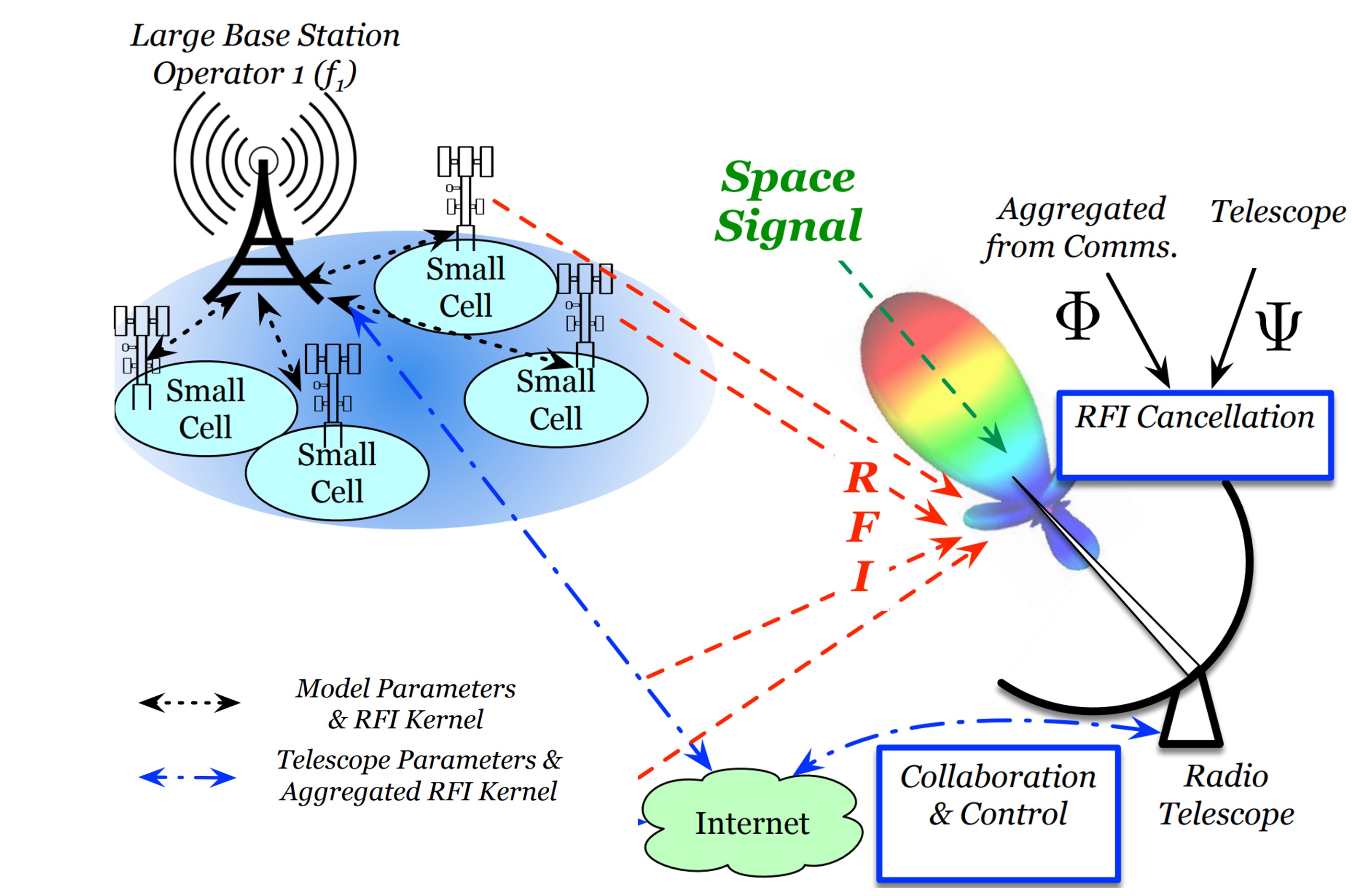RFI Cancellation in Radio Astronomy
Relevant Publications: DySPAN '21, RFI '22
[Thesis] [Slides] [Video] [Cite]The proliferation of next generation (xG) communication networks, increasingly generate unwanted Radio Frequency Interference (RFI), even in bands that are protected for radio astronomy due to out-of-band emissions and intermodulation products. At the same time, technological advances such as wideband and low system temperature receivers are allowing astronomers to observe astronomical emissions over even wider bands. This necessitates stringent mitigation techniques to continue radio astronomy research in presence of challenging RFI. Generally, communication system designers strive to reduce noise from artificially generated signal, whereas radio astronomy focuses on removing communication signals from the astronomical signal. This seemingly opposing requirement is pushing the two communities farther away. Both are equally essential and are designed to overcome a common bottleneck: RFI. So, we present a collaborative framework to address this problem, by aggregating concise, yet accurate signal characterization from the RFI source, i.e., the communication networks and cancel it at the telescope.
#1. Collaborative RFI Subspace Sharing

Even with state of the art methods in RFI mitigation, full recovery of an astronomical signal corrupted by RFI cannot be achieved without prior knowledge of the source of RFI. Fortunately, communication signals can be characterized accurately and made available to the telescope through collaboration, which can be intelligently cancelled from the telescope data to reveal the astronomical signal. This hypothesis has been tested through our analysis and experiments in this paper.
#2. Subspace-based RFI Cancellation at Telescope
Radio frequency Interference (RFI) from cellular and other communication networks is commonly mitigated at the Radio Telescope without any active collaboration with the interfering sources. The expanding Universe and simultaneous proliferation of Earth based and LEO communication infrastructure is causing unprecedented RFI that require collaborative strategies to maintain the scientific and societal goal of each. In this work, we provide a method of signal characterization and its use in subsequent cancellation, that uses Eigenspaces derived from the astronomical and the RFI signals. This is different from conventional time-frequency domain analysis, which is limited to fixed characterizations (e.g., complex exponential in Fourier methods) that cannot adapt to the changing statistics (e.g., autocorrelation) of the RFI, typically observed from communication systems. Through our analysis and simulation using real-world astronomical signals, we are able to remove RFI from cellular networks by 89.04%, which reduces excision at the Telescope.

